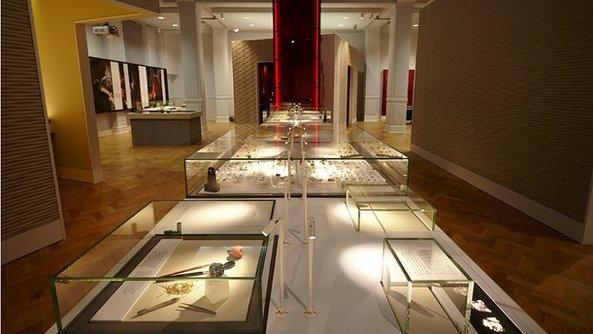Staffordshire Hoard: Sword and helmet reconstructed
- Published
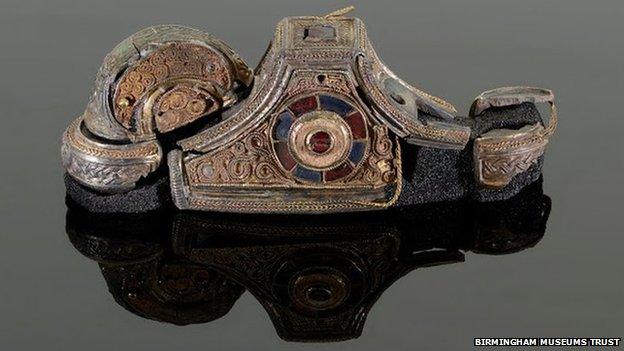
The sword pommel was reconstructed from 26 fragments found in the Staffordshire Hoard
Thousands of metal fragments from the Staffordshire Hoard have been reconstructed into two "significant" new 7th Century objects.
Researchers have pieced together parts of a silver helmet and a previously unseen form of sword pommel.
The hoard, which is valued at £3.2m, was found in a field near Burntwood, Staffordshire in July 2009.
Both items have been put on display at Birmingham's Museum and Art Gallery from Tuesday.
With 4,000 objects, the hoard is the largest cache of Anglo-Saxon gold and silver metalwork ever discovered.
The sword pommel was reconstructed from 26 fragments.
It was decorated with gold filigree and experts believe it probably belonged to "an individual of significant status".
"We're starting to see a mix of styles coming in, so we have pagan Anglo Saxon art, but also Christian and British or Irish art coming in as well," conservation co-ordinator Pieta Greaves said.
Chris Fern, project archaeologist, said it was "probably made in workshops controlled by some of England's earliest kings to reward warriors that served those rulers".
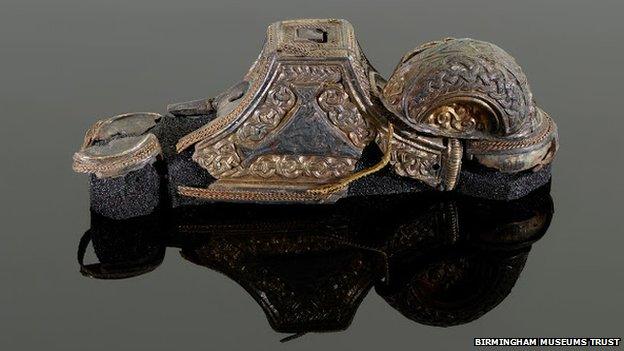
Experts believe the sword probably belonged to "an individual of significant status"
Archaeologists and a conservator have also pieced together about 1,500 fragile silver fragments believed to come from a dismantled helmet.
Ms Greaves said if there was a complete helmet within the hoard, it would be only the fifth of its kind in Britain and may have been worn by a king or someone within the royal court.
Many of the pieces were less than 10mm across and the conservation team said it was a "slow process" putting them together, sometimes matching cut lines or corrosion marks.
Designs on the helmet show warriors and male faces with moustaches, as well as birds, animals and mythical beasts.
Duncan Wilson, from Historic England, said: "As technology and research methods develop we are able to discover more and more, and share the results, but more money needs to be raised to capitalise fully on this rich potential."
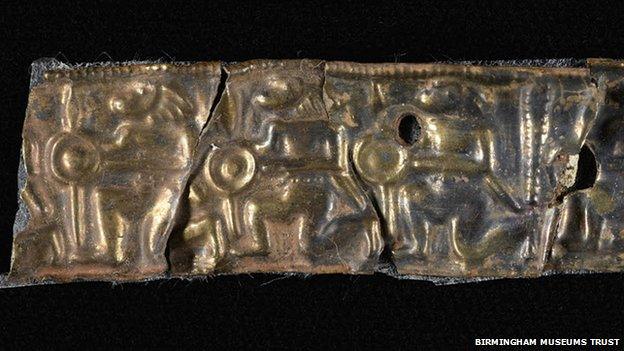
Designs on the helmet show warriors and faces with moustaches
Historic England has so far given £400,000 to help conserve the hoard, including work to clean the silver, gold and garnet objects and fragments.
Birmingham City Council and Stoke-on-Trent City Council, which jointly own the hoard, now aim to raise £120,000 for further work to assemble more artefacts from individual pieces of metalwork.

The parts of a dismantled helmet were put together from about 1,500 thin, fragile silver fragments
- Published4 August 2014

- Published12 March 2014
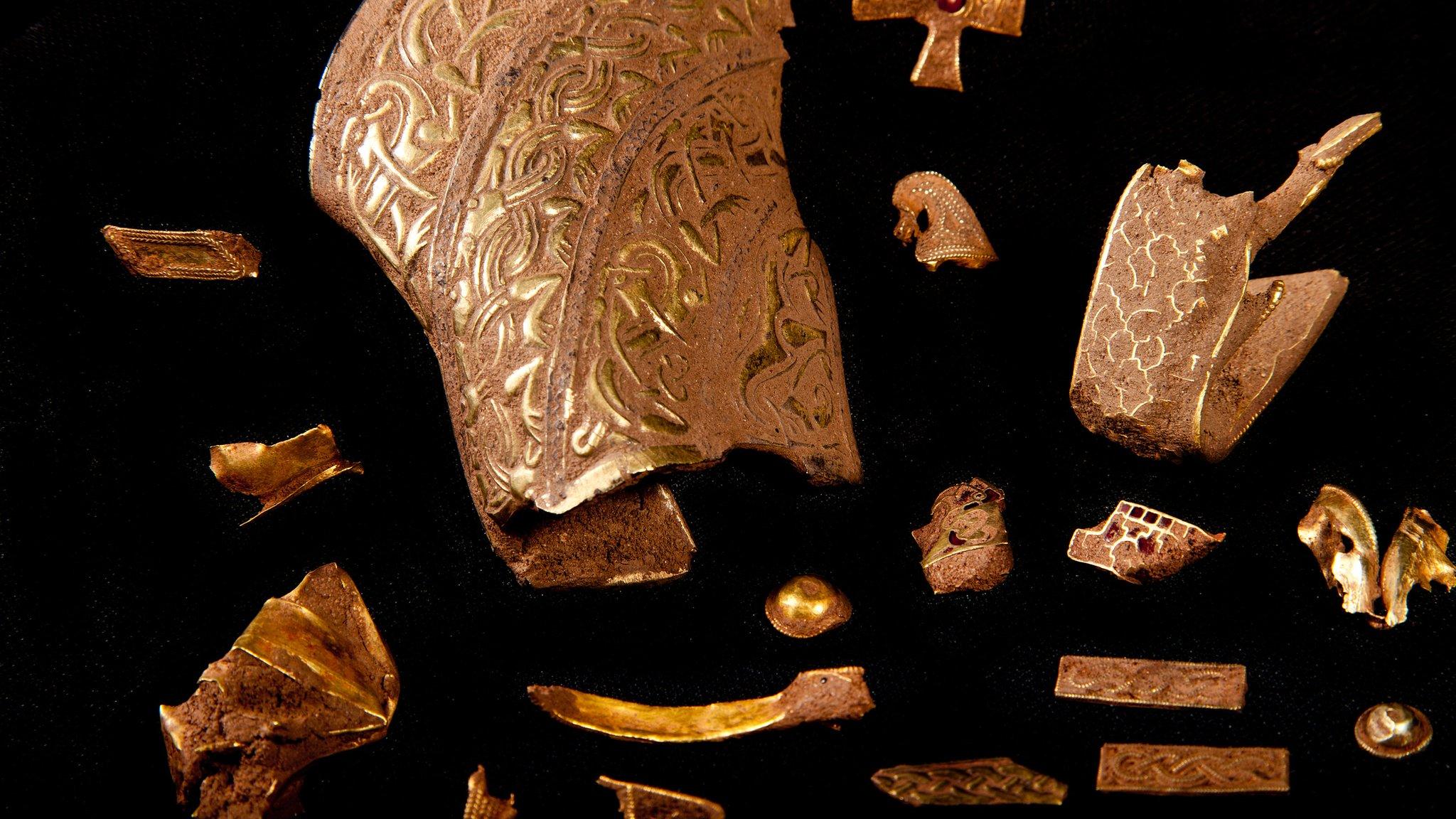
- Published17 October 2014
